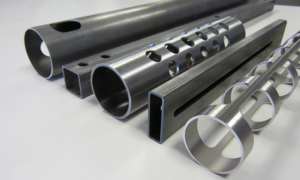
In the competitive world of the food and hospitality industry, custom menus play a vital role in creating memorable dining experiences. From fine dining establishments to casual eateries, the design and printing of menus can leave a lasting impression on customers. This comprehensive guide explores the importance of custom menu printing, covers various design considerations, discusses printing techniques, and offers insights into creating menus that reflect the essence of your brand.
The Power of Custom Menus
When it comes to creating a memorable dining experience, custom menus wield an incredible power. They go beyond being a mere list of dishes, acting as a gateway to showcase the restaurant’s unique offerings, evoke anticipation, and leave a lasting impression on guests. With thoughtful design and careful attention to detail, custom menus have the potential to elevate the dining experience and enhance the overall perception of a restaurant’s brand.
Introduction to Custom Menus in the Dining Experience
In the culinary world, menus serve as the gateway to a delightful dining experience. Custom menus go beyond being a mere list of dishes; they are powerful tools that shape customer perceptions, set expectations, and showcase the unique offerings of a restaurant. A well-designed and thoughtfully printed custom menu can elevate the dining experience and leave a lasting impression on guests.
Impact on Brand Perception and Customer Expectations
Custom menus play a significant role in shaping the overall brand perception of a restaurant. From the menu design to the paper quality and printing techniques, every aspect contributes to the visual representation of the establishment. A beautifully crafted menu can evoke a sense of elegance, sophistication, or creativity, aligning with the restaurant’s brand identity and setting the tone for the culinary experience. Additionally, custom menus help to manage customer expectations by accurately conveying the restaurant’s style, ambiance, and menu offerings.
Personalization and Tailoring to Culinary Offerings
One of the key advantages of custom menu printing is the ability to personalize and tailor the menus to the specific culinary offerings of the restaurant. Whether it’s a fine dining establishment with an ever-changing tasting menu or a casual eatery with a diverse range of dishes, custom menus allow for flexibility in showcasing the unique flavors, ingredients, and culinary expertise of the restaurant. By customizing menus, restaurants can create a cohesive and immersive dining experience that reflects their culinary philosophy and distinguishes them from competitors.
Designing Mouthwatering Menus
Designing mouthwatering menus is an art form that entices diners and sets the stage for an extraordinary culinary experience. From choosing enticing fonts and colors to incorporating enticing food photography, every design element plays a role in capturing the essence of the cuisine and sparking the appetites of guests.
Understanding the Target Audience and Brand Identity
Before diving into the design process, it’s essential to understand the target audience and the restaurant’s brand identity. Consider factors such as the restaurant’s cuisine, ambiance, price range, and target demographic. This understanding will guide the design choices, ensuring that the menu resonates with the intended audience and aligns with the overall brand image.
Layout and Organization for Seamless Navigation
An effective menu design requires careful consideration of layout and organization. Create a logical flow that guides the reader’s eye from appetizers to main courses, desserts, and beverages. Use clear headings, sections, and spacing to ensure easy navigation and readability. Group similar items together and incorporate visual elements such as dividers or borders to enhance clarity and organization.
Striking Visuals: Incorporating Appetizing Food Photography
Visual appeal is crucial in enticing customers and stimulating their appetites. High-quality food photography can showcase the restaurant’s signature dishes and tempt guests with mouthwatering visuals. Ensure that the images are professionally captured, accurately represent the actual dishes, and evoke the desired emotions. Strategically place the photos throughout the menu to create visual interest and enhance the dining experience.
Typography: Choosing Fonts for Readability and Style
Typography plays a significant role in menu design, as it affects both readability and visual appeal. Select fonts that are legible and easy to read, even in dimly lit restaurant settings. Consider the restaurant’s brand personality and choose fonts that complement its style. Strive for a balance between elegance, uniqueness, and readability.
Color Palette: Evoking Emotions and Enhancing Branding
Colors evoke emotions and can contribute to the overall ambiance of a restaurant. Select a color palette that aligns with the restaurant’s brand identity and complements the cuisine. For example, vibrant and bold colors may suit a lively Mexican restaurant, while muted and earthy tones may be more suitable for a rustic Italian eatery. Consistency in color usage throughout the menu helps to reinforce brand recognition and create a visually cohesive experience.
Captivating Descriptions: Crafting Engaging Menu Copy
The menu copy is as important as the visual elements. Craft captivating descriptions that entice and engage the reader. Use descriptive language that highlights the unique features of each dish, emphasizing the flavors, ingredients, and cooking techniques. Incorporate storytelling elements to create an emotional connection and spark curiosity. Well-crafted menu copy can elevate the dining experience and guide customers in making their culinary choices.
Printing Techniques for Stunning Menus
Printing techniques for stunning menus are crucial to bringing the meticulously designed concepts to life. From offset printing that ensures sharp and vibrant colors to specialty techniques like foiling and embossing that add a touch of luxury, the right printing method can elevate the visual appeal and overall quality of menus, leaving a lasting impression on diners.
Choosing the Right Paper Stock
The choice of paper stock can significantly impact the look and feel of a menu. Consider factors such as weight, texture, and durability when selecting the paper. Heavier paper stocks with a smooth finish exude a sense of elegance and durability, while textured papers can add a tactile element and enhance the overall aesthetic appeal of the menu.
Offset Printing: The Gold Standard
Offset printing is a popular technique for custom menu printing due to its high-quality and consistent results. This method utilizes plates to transfer ink onto the paper, resulting in sharp and vibrant colors. Offset printing is well-suited for large print runs and ensures color accuracy and detail, making it an excellent choice for high-end restaurants or establishments with intricate menu designs.
Digital Printing: Efficiency and Flexibility
Digital printing offers flexibility and cost-effectiveness, making it ideal for smaller print runs or menus that require frequent updates. This printing method involves directly transferring digital files onto the paper, eliminating the need for printing plates. Digital printing allows for quick turnaround times and enables customization, such as variable data printing for personalized menus.
Specialty Techniques: Foiling, Embossing, and Spot UV
For restaurants looking to add a touch of luxury and sophistication to their menus, specialty printing techniques can be employed. Foiling can create eye-catching metallic accents, embossing adds texture and depth, and spot UV coating highlights specific elements, creating a glossy and tactile effect. These techniques can elevate the visual appeal of the menu and enhance the perception of quality.
In A Nutshell
Custom menu printing goes beyond being a practical necessity for restaurants; it is an art form that enhances the dining experience and represents the essence of the establishment. By understanding the power of custom menus, investing in thoughtful design, exploring various printing techniques, and adapting to evolving culinary trends, restaurants can create menus that captivate their customers.
A well-designed menu reflects the brand identity, entices the senses, and guides diners through a delightful culinary journey. With the right combination of aesthetics, functionality, and attention to detail, custom menus become an integral part of the dining experience, leaving a lasting impression and fostering customer loyalty.






